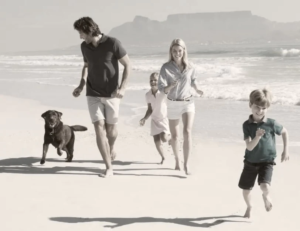Spot the differences — comparing the Canon Rebel T6 and T6i DSLRs

Canon T6i

The Canon EOS Rebel T6i (also referred to as the EOS 750D in other markets) was first released in April 2015. It is an entry-level DSLR with an APS-C sensor that works with Canon EF (full-frame) and EF-S (APS-C specific) lenses.
Inside, it features a 24.2-megapixel (MP) sensor and 19-point autofocus (AF) system powered by Canon’s Digic 6 processor. Its native ISO range is 100 to 12,800, which can be expanded up to ISO 25,600. At full speed, the T6i is capable of capturing up to five frames per second, with a JPEG buffer depth of 940 images and a RAW buffer depth of seven.
In terms of video, the Canon T6i can shoot 1080p video at up to 30 frames per second (fps) and 720p video at 60 fps.
The Canon T6i also includes integrated Wi-Fi and NFC, making it easy to connect and transfer images to mobile devices using Canon’s smartphone app (iOS, Android). Non-wireless connections include a USB 2.0 port, a Type-C Mini HDMI port, a wired remote trigger jack, and a 3.5mm microphone jack. On the top of the camera is an integrated hot shoe for mounting an external flash, as well as an internal, pop-up flash for times when you need a little more light.

Externally, the T6i uses a standard array of buttons that is similar to most any other entry-level Canon DSLR. The stand-out (or should we say swing-out) feature of the T6i is a completely articulating three-inch LCD touchscreen with 1.04 million dots that can be flipped completely around.
As for price, the T6i retails for $650 body-only and $700 as a kit with a Canon EF-S 18-55mm f/3.5-5.6 IS STM lens. Canon also offers the T6i in a Video Creator Kit that retails for $750 and includes a Rode VideoMic GO shotgun microphone and SanDisk 32GB SDHC card in addition to the standard kit — a decent addition for just $50 more.
Canon T6

The Canon EOS Rebel T6 (EOS 1300D in other markets) was first released in April 2016, a year after the T6i. It launched at an even lower price point, making it the most affordable entry-level DSLR that Canon was selling at the time. Like its more powerful predecessor, the T6 is an entry-level APS-C crop sensor DSLR that works with Canon EF and EF-S lenses.
Inside the T6 is an 18 MP sensor and nine-point autofocus system driven by Canon’s DIGIC 4+ image processor. Its native ISO range is 100 to 6,400, expandable to ISO 12,800. The T6 features a maximum capture rate of just three frames per second. While this isn’t exactly impressive, the benefit of such a slow frame rate is that you have an unlimited buffer for JPEG photos (and a six-photo buffer when shooting RAW photos).
When shooting video instead of stills, the Canon T6 shoots 1080p video at up to 30 fps and 720p video at 60 fps.

The T6 also gets Wi-Fi and NFC connectivity. When paired with Canon’s iOS or Android app, this wireless connectivity makes it easy to transfer images straight from your camera to your mobile device. For wired connections, you have a USB 2.0 port, a Type-C Mini HDMI port, and a wired remote trigger jack. On top of the camera is a hot shoe mount and an internal flash.
Continuing with the exterior of the camera, the T6 features a collection of buttons that’s been passed down from generation to generation of entry-level Canon cameras. On the rear of the camera is a three-inch LCD display with 920K dots and a 170-degree viewing angle. This is used for navigating the menu, reviewing images you’ve captured, and composing shots in live-view mode.
The Canon T6 is available as a kit with a Canon EF-S 18-55mm f/3.5-5.6 IS STM lens for $450. A second kit option retails for $550 and includes a Canon EF 75-300mm f/4-5.6 III lens and a Canon shoulder bag.
Differences
Now that we’ve gone over the features of both, let’s take a look at what sets these two cameras apart.
First and foremost, let’s keep in mind that while these cameras are similar in name, the two share a slightly different target customer. The T6i is designed to offer a solid set of entry-level DSLR features, while the T6 is meant to be more of a bare-bones camera.
In the sensor department, it’s not much of a contest. Despite being a year older, the sensor inside the T6i is 24.2MP whereas the sensor inside the T6 is the older 18MP unit that has been around since the Rebel T2i. This discrepancy won’t make a dramatic difference in the quality of your final images, but it’s something to keep in mind.
The T6i also has a faster frame rate when shooting still photos: 4.8 fps compared to 3.0 fps of the T6. Likewise, the T6i features more autofocus points than the T6: 19 compared to nine.
The T6i easily wins out when it comes to the LCD screen, as well. Not only does the three-inch display have a higher resolution than that of the T6, it’s also touch-sensitive and articulates. This can help when you’re shooting at less-than-ideal angles and still want to be able to compose the shot.
Video capabilities of the two devices remain identical in terms of basic resolution and frame rates, but the T6 lacks the microphone port of the T6i. So, if you’re planning on capturing better audio than the onboard microphone offers, the T6i has the edge.
Which camera is right for you?
As always, the answer is, “It depends.”
If you’re looking for a no-frills mirrorless vs DSLR cameras as an upgrade from a point-and-shoot camera, the T6 has you covered. It offers all of your basic features, and at $450, it gets you into the world of Canon DSLRs on a considerably small budget. And the best part is, if you decide you want to pursue more creative endeavors, you can buy almost any lens in Canon’s lineup and throw it on its versatile EF mount.
If you’re hoping to get a little more out of your camera, or have any plan to shoot video, the T6i is likely your better option. The higher resolution, faster frame rate, and better ISO range means you’ll be able to push your creative efforts a good bit more than with the T6. Also, Canon’s Video Creator Kit is a great value and a great option for budding cinematographers or vloggers.
Ultimately, there’s no wrong decision. Both cameras get the job done and can be pushed even further with the help of additional lenses, accessories, and equipment.







